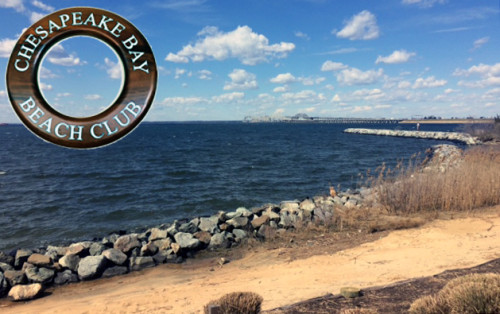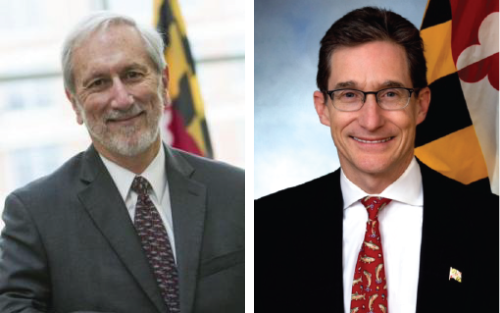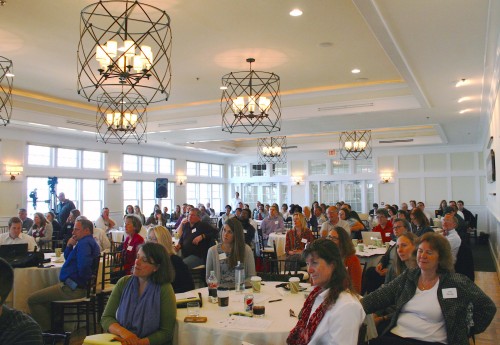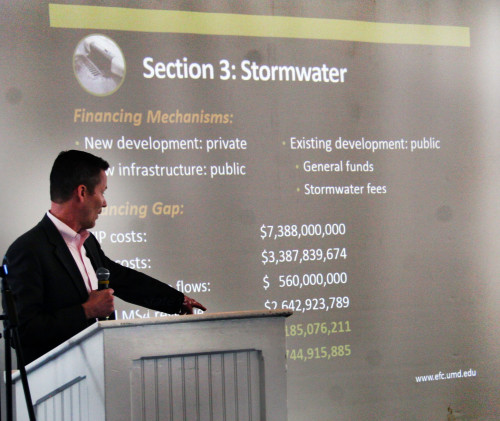Conference on New Ideas to Accelerate Chesapeake Bay Restoration
Bill Dennison ·A one-day conference sponsored by the Harry Hughes Agro-Ecology Center and Town Creek Foundation was held at the Chesapeake Bay Beach Club on 18 March 2016. This conference was originally scheduled earlier in the year, but it was snowed out. The venue on Kent Island was beautiful, with views of the Chesapeake Bay Bridge.

The first speaker was Don Boesch, President of the University of Maryland Center for Environmental Science, who was at his best. Don said that Chesapeake Bay restoration was deeply personal, in that the degradation took place "on my watch", having started his graduate research on the Bay in 1967. He also joked that he had requested that his ashes be scattered in Chesapeake Bay after he died and that we needed to resolve the 'dead zone' before he died because he didn't want his ashes going into the slimy sediments of the dead zone. Don also said that we need Bay restoration success on the 2025 deadline for the Total Maximum Daily Load (TMDL; federally mandated 'nutrient diet'), because we swung and missed in 2000 (Chesapeake 2000 agreement) and again in 2010 (end of voluntary agreement) and a third strike means we're out. Don also used a clever analogy of fruits and nuts. He said that we've picked the low hanging fruit and now it is time to crack the hard nuts. Don emphasized the need for bold ideas, rather than incremental solutions to crack problems, which were the hard nuts.

Ben Grumbles, Secretary of Maryland Department of Environment, was the next speaker and he, too, was inspirational. Ben highlighted the recent success in the refusal of the U.S. Supreme Court to hear the lawsuit spearheaded by the agricultural lobby to rescind the Chesapeake Bay TMDL. He talked about the Conowingo Dam issue, which is really the issue of Maryland's upstream neighboring states of Pennsylvania and New York reducing the loads coming into the Bay via the Susquehanna River. The opportunity to affect the relicensing of the Conowingo Dam through the Federal Energy Regulatory Commission (FERC) for the next several decades is a major thrust. Ben is passionate about developing market-based solutions (e.g., nutrient trading). He also encouraged participants to keep investing in technology for innovative solutions. Ben mentioned that "the history of the land is written in the water" and used a great quote from Pogo: "We are confronted with insurmountable opportunities".
Rich Batiuk, Associate Director of the Chesapeake Bay Program, teased Don Boesch about needing nutrient credits to be able to add his ashes into the Bay and about when Don met John Smith and Pocahontas. Rich used monitoring data to show that reductions of nitrogen and phosphorus are not happening fast enough. He also highlighted the 368 unique practices that are being tested and verified for reduced nutrient and sediment runoff. Rich also brought up the issue that climate change impacts were already happening in Chesapeake Bay. Lee Currey, Director of Scientific Services at Maryland Department of the Environment, used modeling data to compare and contrast the different cost effectiveness of various nutrient reduction approaches in Maryland. He also highlighted the nitrogen reductions that are on target to achieve the 2017 TMDL mid-point assessment. Lee said that phosphorus estimates were likely too optimistic. He highlighted the sewage treatment upgrades of all 67 major plants in Maryland by 2017.

Stuart Schwartz, a Senior Scientist at University of Maryland, Baltimore County, showed dramatic photos of stormwater runoff of green spaces that acted as impervious surfaces due to the removal of topsoil using standard techniques. He pointed out that since jurisdictions receive credit for removing imperious surfaces, the critical issue of hydrologic function is not accounted for. Stuart showed the soil profiles and some experimental plots with composting used to avoid "leaky landscapes". Adam Ortiz, Prince George's County, talked about initiatives to reach "beyond the National Public Radio audience" which targeted churches and schools. Retrofitting the large parking lots at churches and schools helped with stormwater runoff but also empowered people not normally involved in Bay restoration activities. Sadie Drescher from Chesapeake Bay Trust talked about what environmental issues kept her up at night. She concluded that it was the innovations in green technologies and approaches that reassured her.

Don Outen, Baltimore County Natural Resources Manager, talked about management of the Prettyboy Reservoir and its watershed, Baltimore's major supply of drinking water. Initiatives like "Turf to Trees" for rural residential homeowners were developed as part of a suite of "Eco-smart" practices. Ward Slacum from the Oyster Recovery Partnership talked about the multiple benefits of oyster reef restoration in terms of ecosystem benefits like water filtration and enhanced nitrogen removal through denitrification. Stephanie Lansing, from the Department of Environmental Science and Technology at University of Maryland College Park, talked about bio reactors, or anaerobic digesters, as a way to process excess chicken manure. She cited global examples of extensive use of bioreactors (e.g. India, China, Nepal). Rebecca Fox from Environmental Science and Studies at Washington College, showed results of various best management practices in the Choptank River watershed where the nutrient levels have continued to rise. Rebecca illustrated ditches, wetlands, bioreactors, buffers, cover crops, split fertilizer application, and precision agriculture as examples of what could be done to improve agricultural runoff. Judy Denver from the U.S. Geological Survey talked about the groundwater nutrient trends on the Eastern Shore of Chesapeake Bay. Increasing trends in irrigation and winter cover crop application are going to affect groundwater nutrient levels, with differing lag times influencing the response in the Bay.

Dan Nees from the Environmental Finance Center of the University of Maryland College Park stated that their cost analysis of Bay restoration showed that "Restoration success is achievable", but with "major league caveats", with respect to achieving the 2025 nutrient reduction goals as specified by the Total Maximum Daily Load (TMDL). The gap in reducing nitrogen is about 7 million pounds, with a $7B price tag. Dan recommended we treat septic systems with benign neglect, and have upgrades to denitrifying systems mandated for new or replacement septic systems, but not initiate retrofits of existing systems. For regulated discharges, his recommendation was to enforce existing laws and avoid subsidizing upgrades using public monies. Dan's strongest recommendation was to set up a credit based financing system (e.g. Nutrient trading), which echoed comments earlier by Ben Grumbles.

The final session was comprised of a panel with Kim Coble from the Chesapeake Bay Foundation, Julie Pippel from the Division of Environmental Management of Washington County, Maryland and me. Julie highlighted some of the innovations that have been implemented by local government. Kim talked about how much local efforts are important, that smarter efforts are needed and that tenacity is crucial because these issues are not easy. I talked about how innovation with respect to technological, regulatory, social and economic realms was needed. I emphasized that we had examples and analyses that showed that positive trajectories of Chesapeake Bay restoration was achievable. Meredith Lathbury Girard chaired this session and posed the question "What global examples could inform Chesapeake Bay restoration?" Kim Coble gave the example of European towns and cities with clustered living, good public transportation, and green spaces as a model we should strive to emulate. I recommended the "Water Smart" cities approach (e.g., Australia) as well as better integration of social, economic and environmental approaches (e.g. Europe). Sarah Taylor Rogers from the Harry Hughes Center for Agro-Ecology closed out the meeting. All in all, this was a thought-provoking meeting in a beautiful venue looking out over Chesapeake Bay. I came away feeling more energized about the good things happening on the restoration front and more hopeful than ever about Chesapeake Bay restoration.
About the author
Bill Dennison

Dr. Bill Dennison is a Professor of Marine Science and Vice President for Science Application at the University of Maryland Center for Environmental Science.